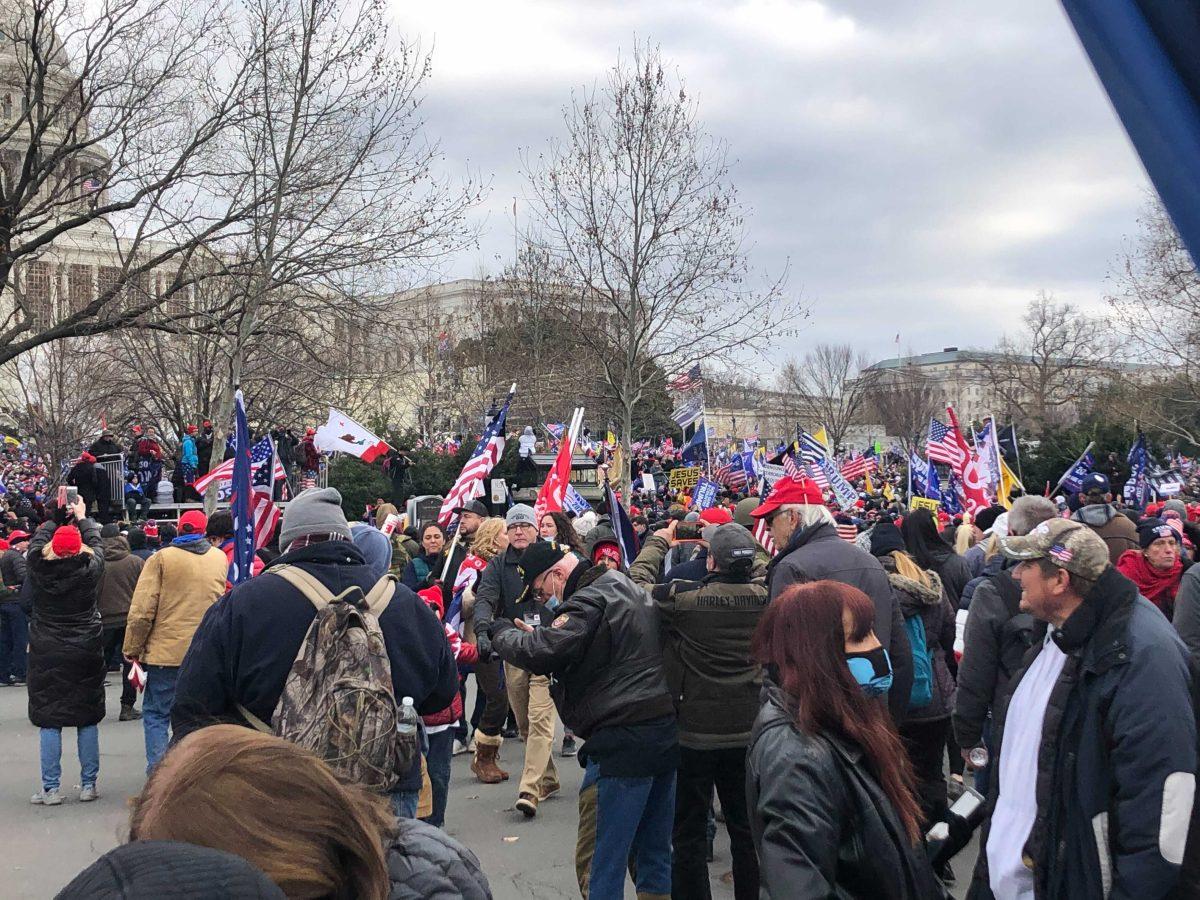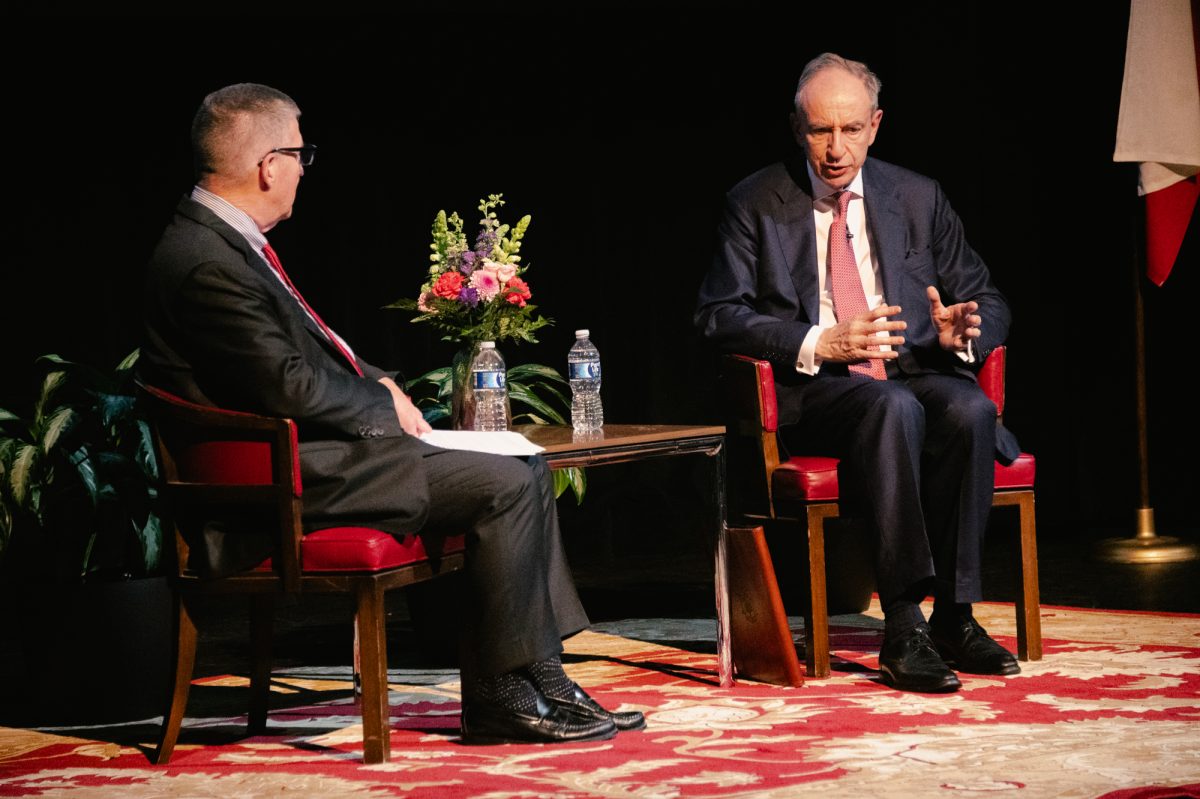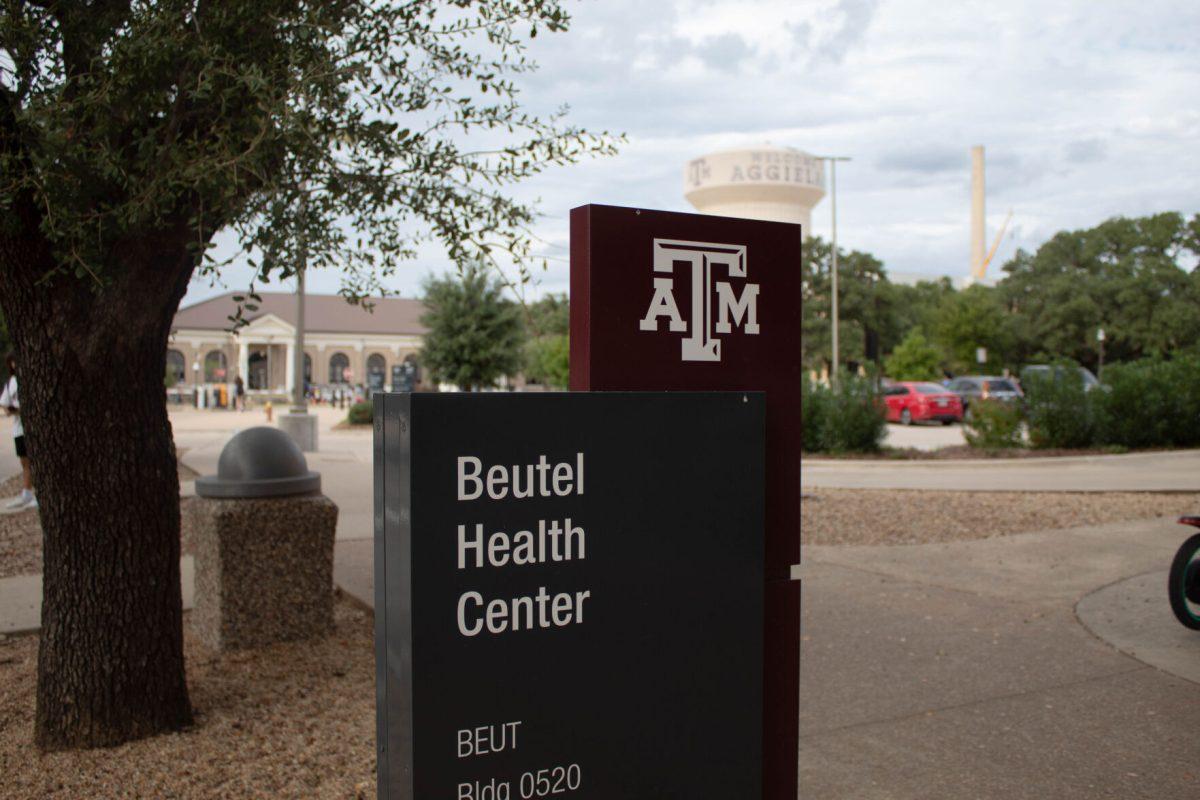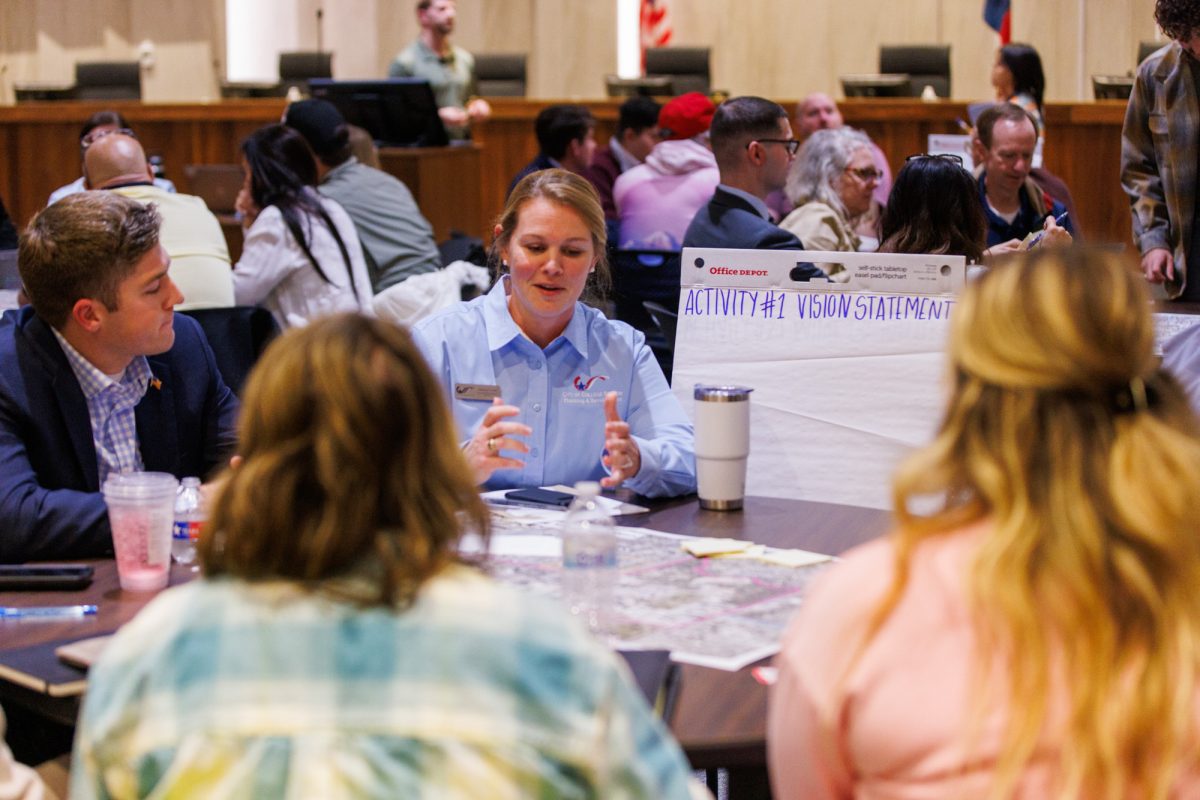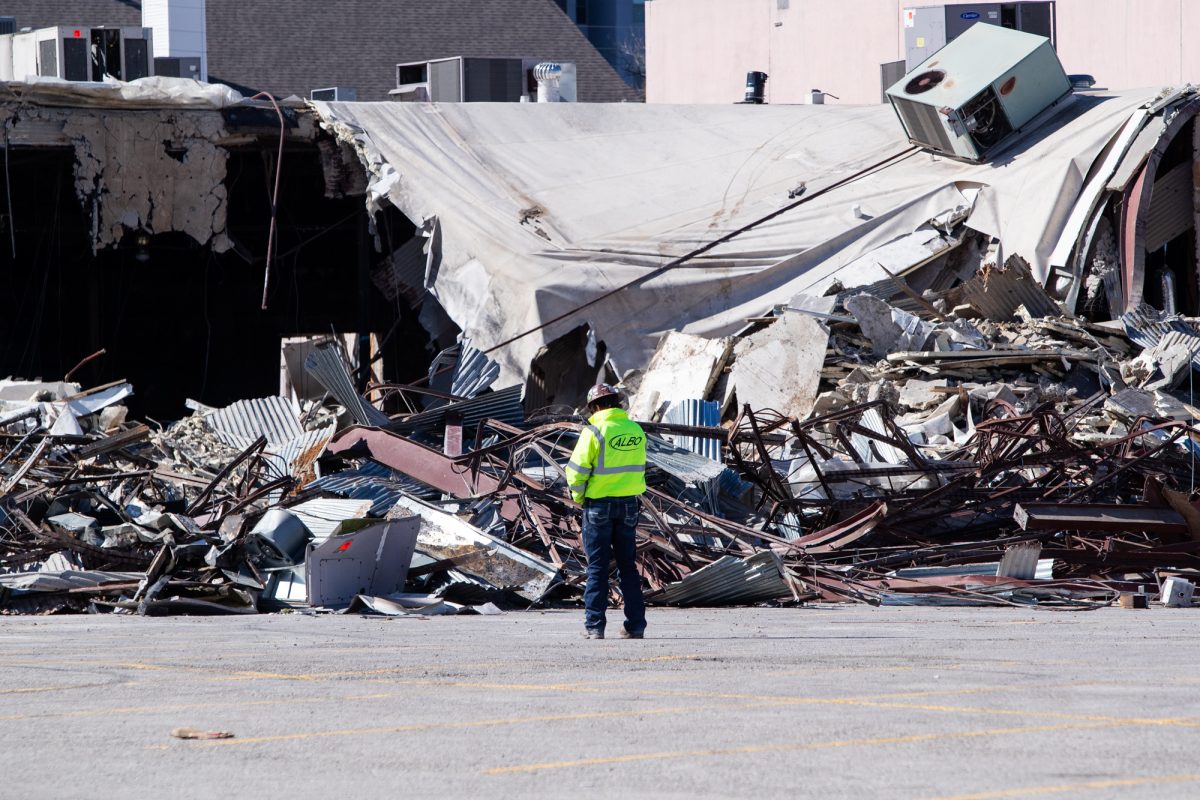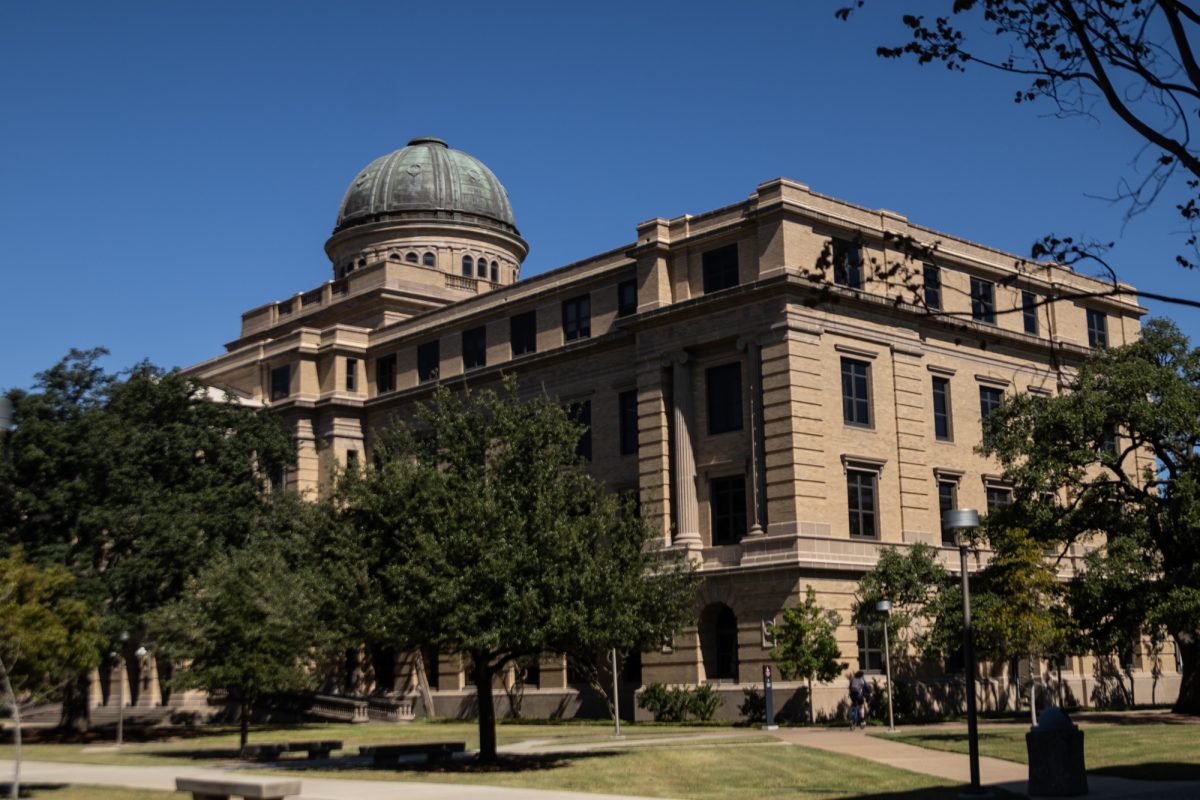Capitol Hill experienced a historic event on Jan. 6 as a protest over election results turned into a violent insurrection.
Hundreds of supporters of President Donald Trump broke into the Capitol building in Washington, D.C. while Congress counted the and confirmed each states’ electoral college votes for the U.S. presidential election. This situation marks the first time the Capitol building has been occupied since the War of 1812.
During the conflict, one woman was fatally shot and three others lost their lives in “medical emergencies.” Additionally, one Capitol police officer was killed during the altercation and another committed suicide in the days following the riot.
One Texas A&M international studies junior attended the protest as a neutral observer while visiting area law schools.
The student said he watched the crowd head toward the Capitol after Trump’s speech that day, eventually breaking through the barricade and into the building.
“If you look at what they did once they were inside, and the people that went inside, there was clearly no plan,” the student said. “I don’t think they ever thought they would get that far. They didn’t even go to take the certified electors ballots that each governor had certified that Pence was going to read off.”
Many people, like political science professor Kirby Goidel, believe the unrest was likely caused by some people’s ill-informed belief that the electoral college decision could be overturned. Trump himself reiterated false claims that Vice President Mike Pence could block the confirmation of President-elect Joe Biden’s election.
“There was a lot of misinformed belief that Mike Pence had the power to say no to certain sets of electors, but he doesn’t,” Goidel said. “He actually is kind of like the host of the Oscars. He can only open the envelopes and read who won and who lost.”
Cameron Poursoltan, Class of 2015, serves as a legislative director for Congressman Michael McCaul and was present in the Capitol building on Jan. 6. Poursoltan said the “almost procedural vote” took a turn when he and the rest of McCaul’s staff were forced to shelter-in-place in the Capitol complex as insurgent protesters breached the Capitol premises.
“The morning was normal, but it did feel a little uneasy, like something could happen,” Poursoltan said. “Sometime in the afternoon after the House convened and we realized and a lot of the protesters realized you couldn’t overturn the election, it got a little hectic. It was scary, but the Capitol police do a good job of keeping us safe so we had confidence that they were going to get it under control.”
Following the insurrection, Congressman McCaul, a Republican representative for Texas’ 10th district called the attack on the Capitol an act of domestic terrorism.
During the session, legislators counted each state’s electoral college votes. If a member of Congress objected to a state’s results, each chamber convened to debate the contested state before voting whether the objections had merit. All objections were rejected both before and after the Capitol break-in.
“After the disturbance, a number of people who were willing to raise objections with voting… said, ‘I’m not going to do it anymore. This is crazy,’’’ Goidel said. “It’s one thing when it seemed like a debate. It was another thing when people were actually going to resort to violence and try to overthrow a democratic election.”
The student who attended the protest said he felt the majority of the protesters had separate motivations from the ones that broke into the Capitol, as each seemed to be there “for different reasons.”
“It’s pretty substantial, the damage that was done,” the student said. “It only takes a few bad apples to ruin the whole bunch, so I think they’ve completely discredited everything that Trump was trying to do in terms of setting legal precedents with this election and how he was going about seeking his legal remedies… but all of that was undone.”
In addition to the lives lost and endangered during the storm of the Capitol, D.C. police recovered explosives, weapons and Molotov cocktails from the grounds.
“Elections are where you have an opportunity to vote and speak your mind,” Poursoltan said. “We shouldn’t have any sort of violence. It doesn’t have a place here. There are a lot of staffers doing very good work, just trying to do their jobs and keep their heads down and members of Congress that were put in harm’s way and it’s not OK.”
Political science professor Jon Bond said the acts of violence ties directly to Trump’s rhetoric during the 2020 election.
“The riots we’re seeing at the Capitol are the inevitable consequence of months of irresponsible behavior laying the groundwork to delegitimize the results of an election he clearly lost,” Bond said. “Donald Trump’s abuse of the power of the presidency threatens American democracy.”
Many people have asked whether Trump’s campaign strategy and demeanor elicited a more polarized voter response. Goidel said although he isn’t to blame for national division, Trump’s rhetoric embraces division for political gain.
“It’s not fair to say that President Trump created the divisions that exist in American politics,” Goidel said. “He is not the cause, but he, more than any other public official that I can think of in my lifetime, has embraced that division as a political strategy.”
In a YouGov Direct Poll, 45 percent of Republicans surveyed agreed with the protesters’ actions at the Capitol. However, a majority of voters said the break-in was a “threat to democracy.”
“In general, Americans do not like protest activity, no matter what the cause,” Goidel said. “We tend not to like these unconventional forms of activity and in many cases, they undermine the cause they are designed to support. This is especially true then when you have violence associated with a demonstration, as was the case here.”
Many news outlets, including Fox News, are comparing police response to the Capitol protest to that of the Black Lives Matter protests following the killing of George Floyd. Goidel said, however, the target of the violence during the Capitol attack is the reason for concern.
“Even if you look at illegal activity in other protests where people are maybe throwing things through store windows or something, that’s bad and typically undermines the protest,” Goidel said. “But the Congress, more than anything else in our political system, is supposed to be where our democracy resides. So if you’re trying to break into… and disrupt the Congress, you’re trying to overthrow democracy. It’s different than looting a Target.”
In the aftermath of the attack, high-level officials such as cabinet members Betsy DeVos and Elaine Chao have resigned. Others are calling for enactment of the 25th amendment to make Pence acting president if Trump is deemed “unable to discharge the powers and duties of his office.”
“If you’d asked me before the storming of the Capitol and [Trump’s] responses to it and his role in sort of inciting it, I would have thought there was no chance at all in terms of it happening,” Goidel said. “Now, I know the talk is real and I think there is a non-trivial chance that it could happen.”
Despite the unrest, on the morning of Jan. 7, President-elect Joe Biden and Vice-President-elect Kamala Harris’s electoral victory certified by Congress, with Trump pledging an “orderly transition of power” on Inauguration Day.
“I’m just glad that as a nation we can start moving past all this, now that the election has been certified,” the student in attendance of the protest said. “I hope that if Trump supporters do come back for the inauguration, they stay peaceful and it’s a different crowd than the one who stormed the Capitol.”
Aggies reflect, share personal experiences from Capitol insurrection
January 11, 2021
Photo by Courtesy of Thomas Reagor
On Jan. 06, rioters stormed U.S. Capitol Building during the certification of President-elect Joe Biden’s electoral victory.
0
Donate to The Battalion
$810
$3500
Contributed
Our Goal
Your donation will support the student journalists of Texas A&M University - College Station. Your contribution will allow us to purchase equipment and cover our annual website hosting costs, in addition to paying freelance staffers for their work, travel costs for coverage and more!
More to Discover




